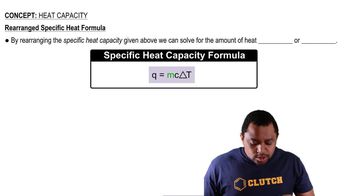Here are the essential concepts you must grasp in order to answer the question correctly.
Enthalpy (_x001F_H)
Enthalpy is a thermodynamic quantity that represents the total heat content of a system at constant pressure. It accounts for the internal energy of the system plus the product of its pressure and volume. In reactions occurring at constant volume, the change in enthalpy can be related to heat transfer, but it is not directly measured since pressure is not constant.
Recommended video:
Internal Energy (_x001F_E)
Internal energy is the total energy contained within a system, including kinetic and potential energies of the particles. For reactions occurring in a constant-volume container, the change in internal energy is equal to the heat exchanged, as no work is done on or by the system. This makes internal energy a crucial factor in understanding heat changes in gas-phase reactions.
Recommended video:
Work and Heat in Reactions
In chemical reactions, the distinction between heat and work is essential. At constant volume, no work is done by the system (since volume does not change), meaning that the heat change observed corresponds directly to the change in internal energy. Therefore, for the reaction in question, the change in internal energy (_x001F_E) will be greater than the change in enthalpy (_x001F_H) because _x001F_H includes the work term that is zero in this scenario.
Recommended video:




